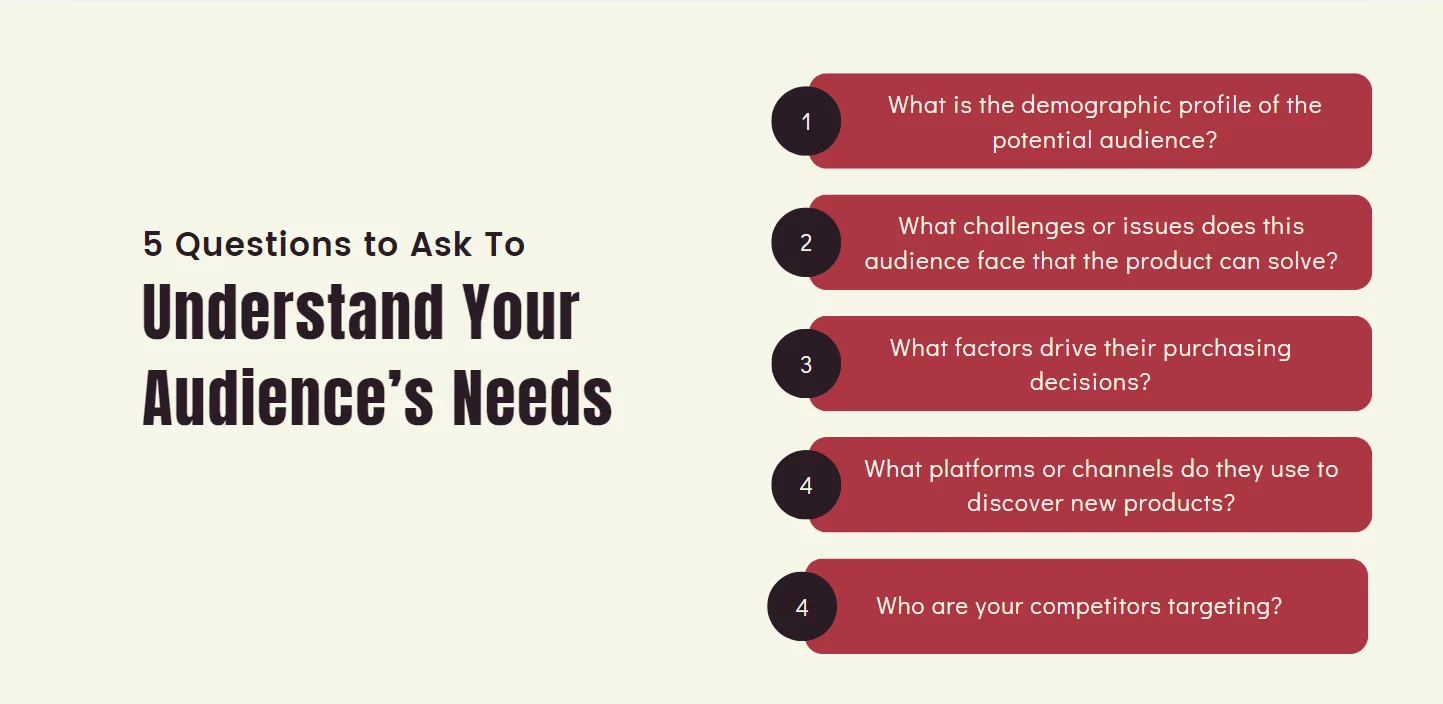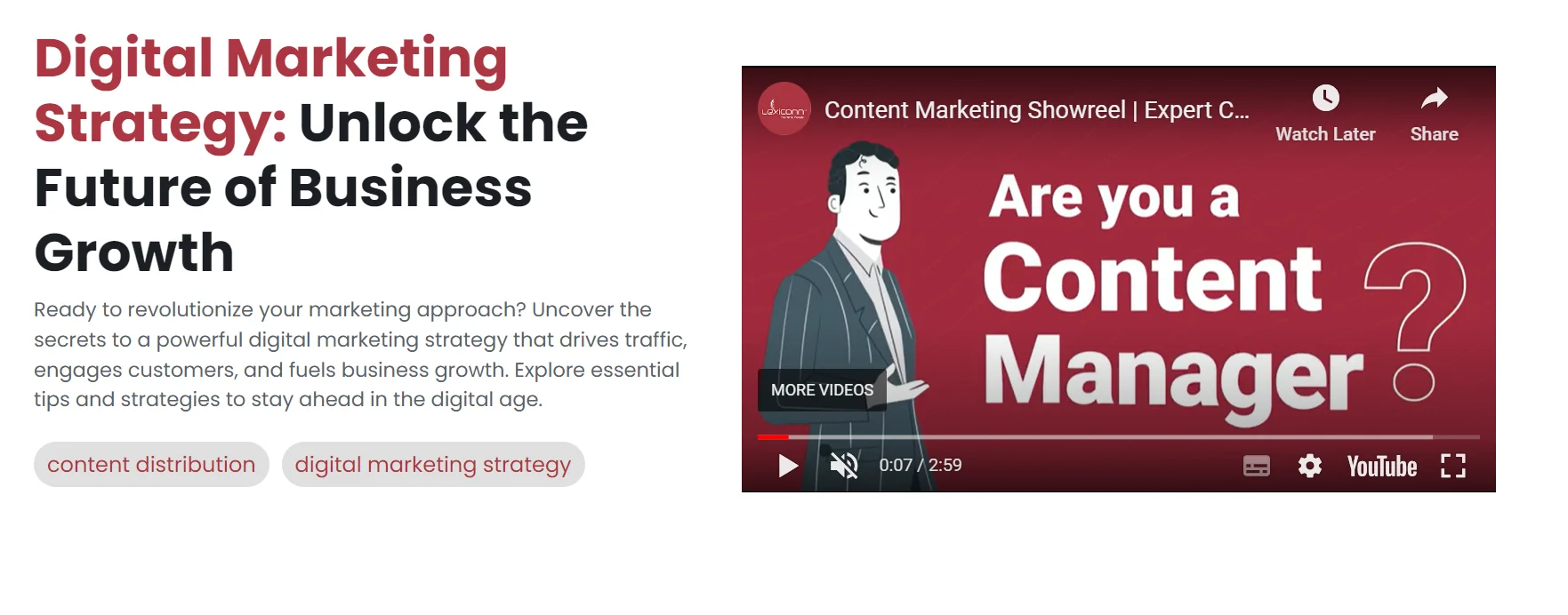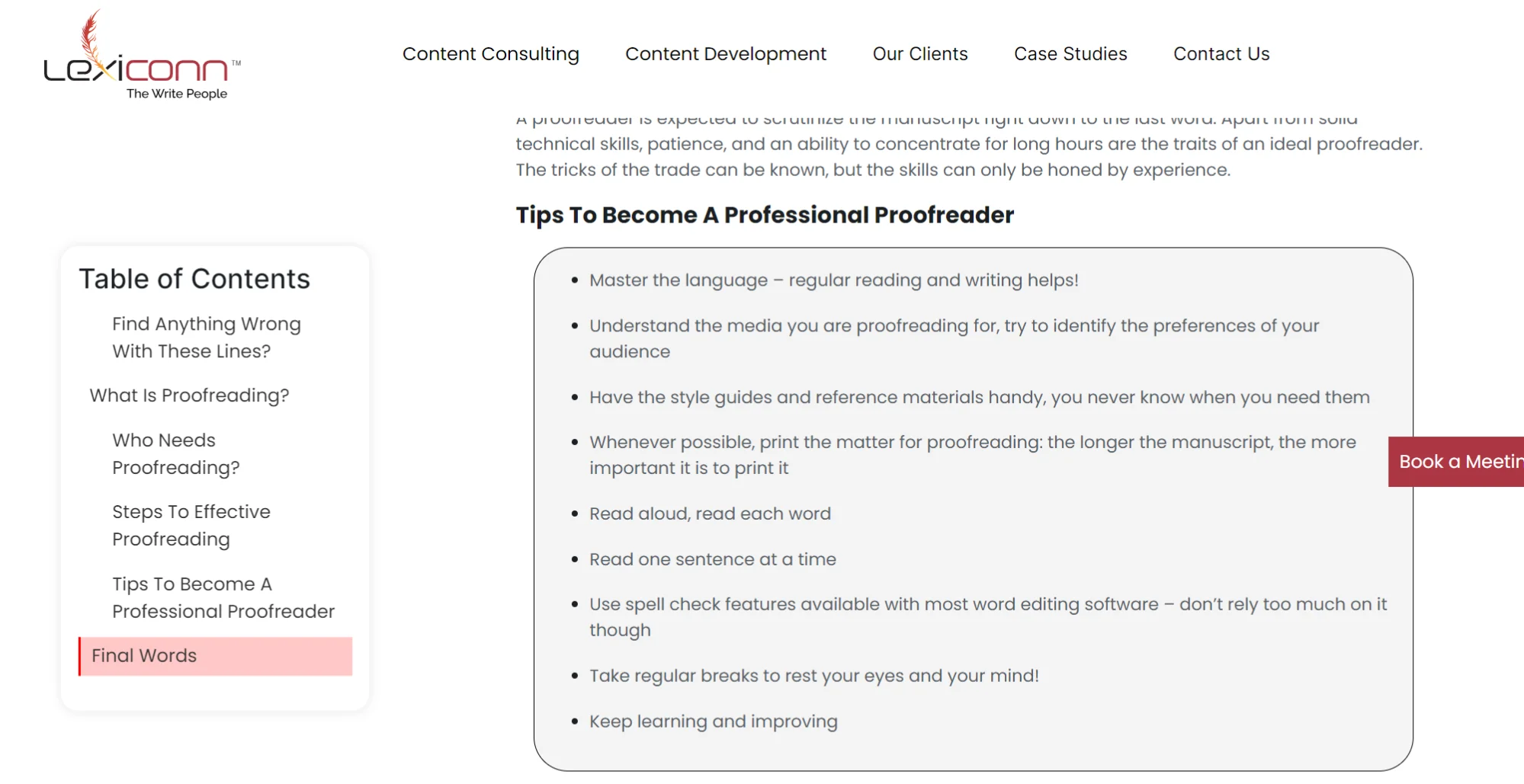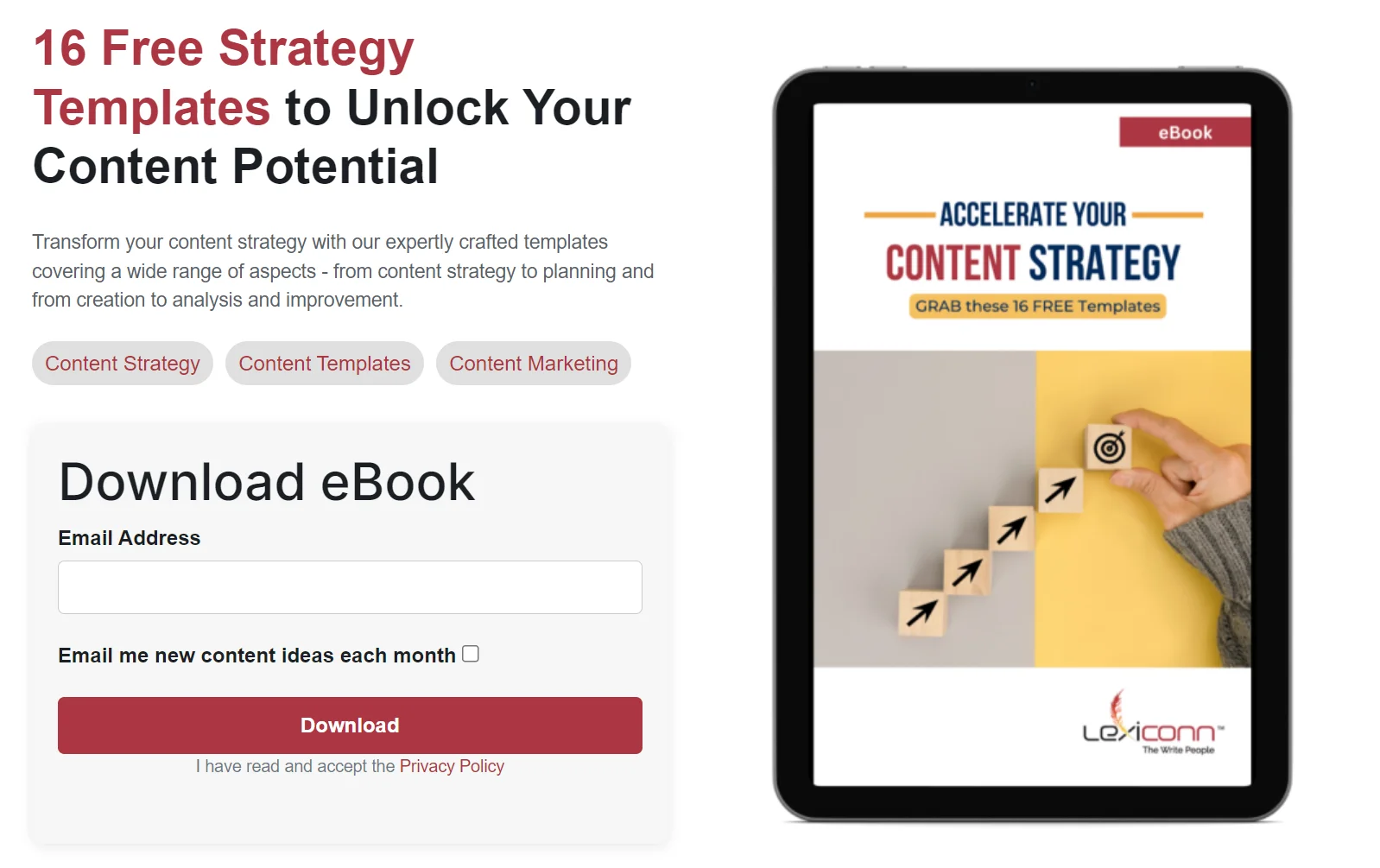
Brand authority goes beyond just having a recognizable name; it’s about brand positioning and how consumers and search engines perceive the brand.
Take "Nothing," for example—the tech company. Despite its name, searching for "Nothing" now leads to the brand's stylish gadgets rather than the word's literal meaning. This shows how important it is to create a strong identity that connects with what people expect.
A well-executed content marketing strategy plays a big role here. It creates valuable, relevant content that lifts brand positioning and authority in one’s industry. Now, let’s understand how to establish and grow your brand authority.
Brand authority plays a key role in both search rankings and customer trust. Strong brands often appear higher in search results, not just because of SEO strategies or domain authority, but because of their brand positioning. This happens because Google gives brands extra visibility, like expanded listings, knowledge graph features, and higher click-through rates, especially when the brand is seen as an authority in its industry.
When people see your brand as an authority, it directly influences their actions, leading to higher click-through rates (CTR) and better organic rankings. Features like site links (extra navigation options under your main link) and knowledge panels (information boxes about your brand) further increase visibility. The stronger your brand positioning, the better your chances of ranking higher and attracting more clicks.
When you start a new brand, SEO and domain authority cannot be avoided, but increasing the brand’s position involves strategies focused on visibility, trust, and engagement. Let’s look at a few techniques that can directly impact your brand positioning:
Make sure your messaging, visuals, and tone remain consistent across all platforms. This builds recognition with your audience and increases brand positioning.
Deliver exceptional service, both online and offline. Positive experiences lead to word-of-mouth recommendations and loyal customers.
Be genuine in your values and mission. People connect more with brands that are transparent and true to their purpose.
Share the story behind your brand, its journey, and what it stands for. Strong narratives connect with consumers and make your brand memorable.
Produce valuable, relevant content that speaks to your audience’s needs and interests. This can range from educational blog posts to social media engagement.
Use testimonials, reviews, and influencer partnerships to enhance credibility and trust, which further cements your brand positioning.
Continuously improve and innovate your products or services. A brand that stays ahead of trends and customer needs strengthens its position.
Brand authority isn’t built overnight—it takes at least six months of consistent effort to position your brand on top. Let’s explore the key strategies for achieving brand authority through content marketing.
Looking to establish brand authority through top-notch content writing services? Try Lexiconn for expert support!
How do you find your target audience? What makes them the right fit for your brand positioning? It starts with understanding key factors like age, gender, location, and interests. By focusing on these details, you can avoid wasting money on ads that don’t hit the mark, improving your ROI.
How do you begin identifying your target audience? Start by taking a good look at your current customers. Ask these five questions to target them with your content.

Q1: What is the demographic profile of the potential audience?
Surveys are one of the simplest methods to identify your audience’s demographic profile. You can ask your customers directly about their age, gender, location, and income—just make sure to keep it short and engaging!
If you’re active on social media, platforms like Facebook and Instagram offer great analytics that break down who your followers are. And don't forget your own customer database—analyzing who’s already buying from you is a goldmine of information.
Lastly, dive into industry reports or census data for broader demographic trends in your sector. All these pieces will give you a clearer picture of who your target audience really is.
Q2: What challenges or issues does this audience face that the product can solve?
If you really want to understand what problems your product is solving, nothing beats talking to people. Customer interviews—whether through casual chats or more formal interviews—can reveal what challenges they face and how your product can help.
Check out online forums like Reddit or Quora, where your potential customers are likely discussing their problems and frustrations. Social listening tools can help monitor these discussions on social media as well.
Another great tactic? Look at your competitors’ reviews and understand your brand’s position. Customers often vent about what they don’t like, and this can highlight gaps your product could fill.
Q3: What factors drive their purchasing decisions?
When it comes to why your audience buys, you want to ask the right questions. Surveys and focus groups are perfect for this. You can ask about what factors matter most—whether it’s price, quality, or convenience—and customize your marketing accordingly.
If you already have sales data, dig into it to see what patterns emerge. Maybe they’re opting for lower-priced items, or maybe a specific feature is always a top seller.
Also, take a peek at how your competitors are positioning themselves. What do their customers say in reviews? Are they honoring low prices or superior quality? This will give you some clues as to what’s driving decisions in your niche.
Q4: What platforms or channels do they use to discover new products?
Figuring out where your audience spends more time online is just as important as understanding who they are. Tools like Google Analytics can show you where your website traffic comes from—social media, search engines, or other sources.
Social media platforms also offer built-in analytics that shows which posts or campaigns generate the most engagement. A quick post-purchase survey can provide valuable insights into which channels are really working for you.
Q5: Who are your competitors targeting?
Your competitors have already done some of the legwork, so why not see who they’re targeting? Start by looking at their websites and social media pages. Pay attention to their messaging—are they speaking to young professionals, families, or tech-savvy millennials? Tools like SimilarWeb can show where their traffic is coming from, offering a glimpse into who they’re reaching.
Content strategy involves planning, creating, publishing, and managing content to attract and engage your target audience while improving brand positioning. It’s crucial for driving success, making it a key part of your marketing efforts. Looking for quality content writing services? Lexiconn can help you achieve your goals. Here are a few tips to develop your content strategy.
Start by identifying your objectives. Determine what you want to achieve with your content (e.g., brand awareness, lead generation, customer retention) while focusing on strengthening your brand positioning. Use the SMART framework to make sure your goals are Specific, Measurable, Achievable, Relevant, and Time-bound.
For example, “Increase website traffic by 25% in the next six months through weekly blog posts” can be a goal that is Specific, Measurable, Achievable, Relevant, and Time-bound.
Assess your current content to determine what’s performing well and what isn’t, and ensure your brand positioning is consistently represented across all channels. Assess the performance of your content and identify areas that need improvement or new content topics that you should explore.
You can also check your competitors to see what’s working for them. Tools like SEMrush, Ahrefs, and BuzzSumo can help you analyze competitor content, spot trending posts, and find opportunities to increase your own strategy. An audit may reveal that your how-to guides are popular, suggesting a focus on more instructional content.
With vast content published every second, effective content distribution is crucial to ensure your content stands out. Decide what types of content you will create—whether it’s blog posts, videos, infographics, or social media posts. Different formats will support your brand positioning in unique ways. Content distribution involves sharing your content across various channels—owned, earned, and paid—to increase brand awareness, generate leads, and strengthen your brand positioning.
Owned channels, like websites, blogs, and social media profiles, offer full control but often have limited reach. Content on these platforms must be mobile-friendly, SEO-optimized, and visually engaging.
Earned channels, such as social media shares, backlinks, and media coverage, expand your content’s reach but come with less control. To make the most of these channels, focus on creating content that encourages sharing. Build backlinks through guest posts and media coverage to enhance brand positioning and visibility.
Paid channels, including social media ads, native ads, and sponsored content, deliver immediate results but require a budget. Target ads on platforms like Facebook, X, LinkedIn, and TikTok based on demographics and user interests.
A content calendar outlines when and what content will be published, incorporating key elements such as important events, product launches, seasonal trends, and promotional campaigns to keep your schedule relevant. You can also include sections for content types, target audience, distribution channels, posting dates, submission dates, metrics for success, reviewers, and status updates.
Simple tools like Google Sheets can streamline this process, providing an easy-to-update format that enables real-time collaboration among team members. This adaptability helps everyone stay organized and on schedule, allowing for quick adjustments as necessary. Platforms like Trello, Asana, or Google Calendar can also be effective for creating content calendars.
Setting metrics for success is crucial for evaluating your content strategy's effectiveness.
Key metrics include traffic, which indicates how many visitors engage with your content; engagement rates, reflecting user interactions like comments and shares; and conversions, showing how many visitors take desired actions, such as signing up for newsletters or making purchases.
Additionally, monitoring social shares reveals content quality and expands reach, while tracking bounce rate helps assess relevance. Lastly, email sign-ups measure interest in your product/services and facilitate lead nurturing. Regularly reviewing these metrics enables you to refine your strategy based on performance, ensuring your content effectively attracts and nurtures leads.
Tools like Google Analytics, HubSpot, and Hootsuite can provide detailed performance insights, helping you adjust your strategy based on what’s working and what isn’t. Design content to attract and nurture leads at different stages of the funnel. Use tactics like email sign-ups and CRM tools to guide prospects from awareness to conversion.
Delivering valuable and engaging material is key to effective communication. Try Lexiconn and create insightful articles, engaging blog posts, and compelling social media updates that truly connect with your audience.
1. Use Engaging Headlines
Understand your audience’s pain points, desires, and interests, and shape your content to address them head-on. Begin with a clear, attention-grabbing headline that makes people want to click and read. Follow it up with clear, actionable steps that guide them through the content in a way that holds their interest.
Remember, with an average attention span of just 8.25 seconds, you need to capture their attention right from the start.
If your target audience is runners searching for the perfect pair of shoes but worried about online purchases, write a blog post like “Having Trouble Finding the Right Running Shoes? Here’s a Simple 3-Step Guide to Get the Perfect Fit” with practical tips and real-life examples to back up your advice.
2. Incorporate Visuals
Add high-quality images, videos, infographics, or charts to make your content more engaging and easier to digest. If you’re explaining a complex topic like “How to Set Up Google Analytics,” include screenshots and step-by-step visuals to guide readers through the process.

3. Optimize for Readability
Break up your content into short paragraphs, and use subheadings, bullet points, and bold text to make it skimmable. When writing an article on “The Benefits of Email Marketing,” break it into sections like “How Email Marketing Drives Sales,” “Common Mistakes to Avoid,” and “Best Tools for Automation” with bullet points under each section.

4. Provide Actionable Insights
Don’t just provide information—offer practical tips that readers can implement right away. An article about “Improving Time Management” includes actionable advice like “Use the Pomodoro Technique by working for 25 minutes, then taking a 5-minute break to stay focused.”

5. Update Content Regularly
Keep your content relevant by updating statistics, adding new insights, or expanding on certain topics. If you have a guide titled “Social Media Trends 2023,” update it with current trends for 2024 and republish it to keep it fresh and valuable. Create interconnected posts around a main topic (pillar content) and its sub-topics. This builds authority and covers various stages of the marketing funnel.
6. Ensure SEO Optimization
Research and incorporate relevant keywords, meta descriptions, and alt texts for images to improve search visibility. If you’re writing a blog post on “Digital Marketing Strategies,” use long-tail keywords like “digital marketing for startups” and “budget digital marketing tactics” to optimize your post.
7. Use Data and Statistics
Support your claims with credible data and statistics to build trust and authority. For example, when discussing “The Benefits of Remote Work,” you could mention, “A recent survey found that 77% of remote workers report higher productivity.” Incorporating relevant and up-to-date stats like this not only adds credibility but also reassures readers that they can rely on your content as a content authority and trustworthy resource.

8. Include Strong Calls-to-Action (CTAs)
End your content with a clear CTA that tells readers what to do next, such as signing up for a newsletter or downloading an ebook. After explaining “The Importance of explainer videos,” add a CTA like “Reach out to us @ www.abc.in for expert assistance.”

Effective content fulfills its intended purpose, supports company objectives, and achieves the desired reach and impact. You can find your brand positioning through Important metrics like:
To keep content effective and relevant, it’s important to review and adjust it based on performance regularly. Establish clear criteria to trigger a content review. This could be based on time (e.g., every 3 months) or volume (e.g., after 10,000 views). Defining these thresholds helps ensure content stays fresh and continues to meet business objectives.
Analyze how the content is performing against key metrics such as reach, engagement, and conversions to understand your brand positiong. If performance dips or trends change, tweak the content accordingly—whether that means updating keywords, refining the call to action, or even changing the format.
Tools like Nudge, Google Analytics, and Hotjar provide real-time insights into how content is performing.
By focusing on these strategies, you’ll improve content quality and enhance your brand positioning, making it more compelling to your audience. Remember to keep your metrics in check to ensure your content strategy aligns with your overall business goals and effectively promotes your brand positioning in the market.
Building brand authority takes time and consistent effort. Your brand can grow into an industry leader by creating valuable content that connects with your audience, establishing content authority through engaging interactions on the right platforms, and continuously refining your strategy.
Content marketing is one of the most effective tools for achieving this—start today. Reach out to Lexiconn for a free strategy session, and let's explore how we can help your brand stand out and grow! Download our free ebook on content strategy templates to create, analyze, and improve your content marketing.



I have read and accept the Privacy Policy
Read More